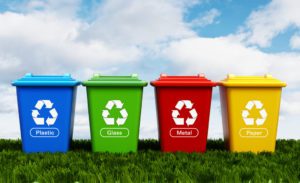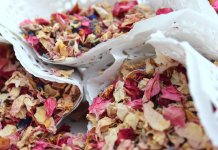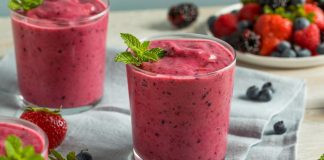
Flagstaff’s recycling policy changed recently (as did the policies of many other US Cities). Are you still filling your recycling bin with plastic? You might be surprised at how limited our new policy is. Up until June 1st of last year the city was accepting plastics labeled 1-7. But due to China’s recent ban on plastic imports American cities no longer have buyers for most of our plastic waste and it’s all going to the landfill.
Why does it matter?
Plastics are really convenient but they are an enormous problem. They basically never biodegrade, they infiltrate our water ways and have a detrimental impact on wildlife, especially ocean life. Toxic endocrine disruptors (you’ve probably heard of BPA) leach from plastic and have a negative impacts on human reproductive systems, micro plastics have even been found in human stool. Every toothbrush, straw, beverage lid or balloon ever used is still on earth somewhere. Plastics are that permanent.
So what plastics can we recycle?
Bottles, jugs and jars. That it.
The recycling policy regarding paper, glass and metal hasn’t changed. But now there are very few plastics that can go in your recycling bin. Luckily, there are other ways to reduce your plastic waste. Also, even when plastics can be recycled, recycling still isn’t a perfect system.
How to reduce your family’s plastic packaging waste:
1. Don’t buy the thing
The first step to reducing your waste is to reduce your overall consumption. Think carefully about whether or not you REALLY need the thing, can you borrow the thing from a friend? Can you fix the thing you already have? Try to avoid buying things in the first place.
2. Buy the thing used
When you buy used the environmental damage is already done. resources have already been extracted, packaging has already been disposed of. Buying used disrupts the cycle of resource extraction to discard. We are living on a finite planet, the least we can do is use something more than once.
3. Buy the most durable option
If you must buy a new thing do some research and buy to last so that you never have to replace the thing. This website is a great resource to help you find durable, lasting products. Quality is expensive, but when things are built to last you save in the long term when you don’t have to buy a replacement.
4. Buy plastic free
Try to buy plastic-free, reusable alternatives, stainless steel straws, makeup in compostable packaging, compostable toothbrushes use bars of soap instead of disposable plastic soap containers (shop local bath products) Unfortunately the environmentally friendly option is also the more expensive option. That is because plastic disposable products externalize their true cost. Our generation will not pay the price for our disposable culture but future generations will.
5. Buy in bulk
If you must buy something in plastic packaging, buy the bigger package. There is less waste in one gigantic bottles of laundry detergent than there is in two smaller ones. Often buying in bulk saves you money too.
How to reduce your plastic food waste:
1. Chose the plastic free option
Opt not to bag your produce in single-use plastic bags (you should wash it when you get home anyway.) If you aren’t ready to kick that habit, at least bring the same bags back to the store and use them more than once. Many processed foods are available in glass instead of plastic. Milk can be bought in glass jugs that can be returned to the store and reused.
2. Avoid individually packaged products
I have two small kids and little individually packaged snacks (yogurt, squeeze pouches, string cheese, snack bars) can be life savers sometimes. But they generate so much waste! Think hard about whether a few minutes of time saved is really worth the hundreds of years that this packages will be here.
3. Make it from scratch
You can skip the packaging completely if you make things from scratch. Often this is a cheaper and healthier option too. Heres a few of my favorite from scratch food swaps.
1. Yogurt
This ones only easy if you have an instant pot. But its so much cheaper. You can buy milk in a glass jug and make enough yogurt to satisfy toddlers for a couple weeks. Add some jam and granola, put it in small mason jars and you’ve got convenient picnic parfaits.
2. Peanut butter
I’m picky about peanut butter because I don’t like to buy nut butters that have added sugar or palm oil. Its baffling to me how much more expensive it is to get peanut butter that is just peanuts! Sprouts sells peanuts in bulk for less than $2 a pound and a pound of nuts makes plenty of butter, and you can reuse the same bulk bag. Just throw them in a food processor on high for a few minutes and go do something else. I typically do it while I’m putting away the other groceries.
3. Hummus
Like peanut butter, making hummus from scratch will save you money and cut your plastic waste. A can of chickpeas is really cheap, just throw them in a food processor or blender, add olive oil until its a consistency you like. You can spice it up with garlic or roasted peppers or whatever and it’s delicious.









